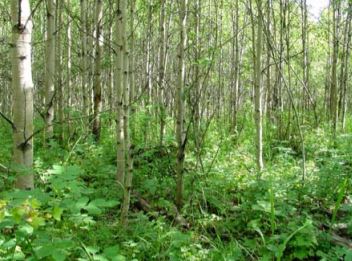Administration of rangelands
Rangelands are either owned privately or by the Crown and are managed to supply forage for both livestock and wildlife. Government supports the economic viability of existing ranching operations in British Columbia by ensuring continued access to Crown land for grazing and haycutting purposes.
2025 Crown Range Rents and Fees
Private and Crown rangelands are used for forage for livestock including cattle, horses and goats. About 80 percent of rangeland in B.C. is on Crown land. The rest is privately owned. To cut hay or graze livestock on Crown rangelands, ranchers and guide-outfitters must have a lease or licence and follow a rangeland management plan.
B.C. is unique in the relatively small percentage of land that is privately owned. This means that access to provincial Crown land is necessary for livestock grazing. Grazing is authorized on Crown rangeland under the Range Act and regulated by the Forest and Range Practices Act (FRPA). Heritage grazing leases were administered under the Land Act.
Rangeland is found across the province and management varies with plant communities, climate and geography. Crown rangeland is found in the Peace region, across the Northern and Southern Interiors, and the Kootenays.
A common pattern found in the Southern Interior is: B.C. ranchers graze their cattle on low to mid elevation bunchgrass or wheatgrass-needlegrass range in early spring. They then move the cattle to higher elevation pinegrass or bluejoint range, cut-blocks and native sedge meadows in early summer, returning them back to native bunchgrass or wheatgrass-needlegrass range in the fall.
2025 Crown range rents and fees
Grazing and Haycutting Licence or Permit (not leases)
Rates for authorized forage and tonnes of hay on Crown range as calculated under Range Act Regulation Sections 15 and 16 are:
Grazing Licence or Permit
- $5.04 - Per Animal Unit Month Grazing Fee
- $0.20 - Per Animal Unit Month Grazing Ground Rate
- $5.24 - Total Grazing Fees Per Animal Unit Month (AUM)
Hay-cutting Licence or Permit
- $15.13- Per Tonne Hay-Cutting Fee
- $ 0.60 - Per Tonne Ground Rent
- $15.73 - Total Hay-Cutting Fees Per Tonne
The Goods and Services Sales Tax (G.S.T.) applies to all charges. In accordance with Section 13 of the Range Act, Range Regulation amended December 14, 2014, an annual fee for licences and permits of $25.00 plus GST will be charged per tenure.
Land Act Grazing Lease Forage Fees
Rental fees for grazing leases under the Land Act are paid annually on the anniversary of the lease agreement issuance date. Fees are updated August 1st of each year. These fees are the greater of the base rent, the forage fee, or the minimum annual rent of $850 (effective November 2024). Forage fee rates for grazing leases as calculated under LWBC Land Policy: Grazing (2004) are:
Forage Fee
- $5.04 per animal unit month (AUM)*
*Animal unit months (AUMs) are the number of animal unit months established in the grazing lease management plan.
The Goods and Services Sales Tax (G.S.T.) applies to all charges.

This Peace River aspen stand features an abundance of desirable plants including shrubs, forbs and grasses.
Contact information
Contact your Natural Resource District and Range Officer if you have questions about rangeland use in a specific Natural Resource District. Please direct general questions to:
Forests.RangeBranch@gov.bc.ca
Range.GrazingLeases@gov.bc.ca
Invasive.Plants@gov.bc.ca
Range.Practices@gov.bc.ca
Range.GrazingPolicy@gov.bc.ca
